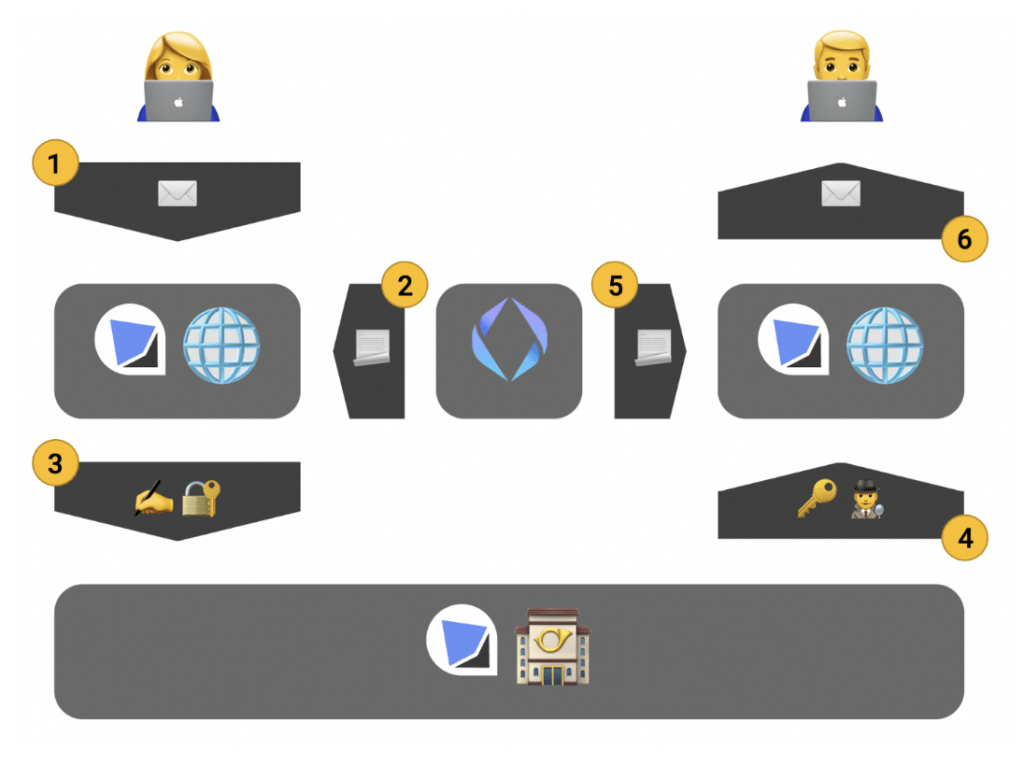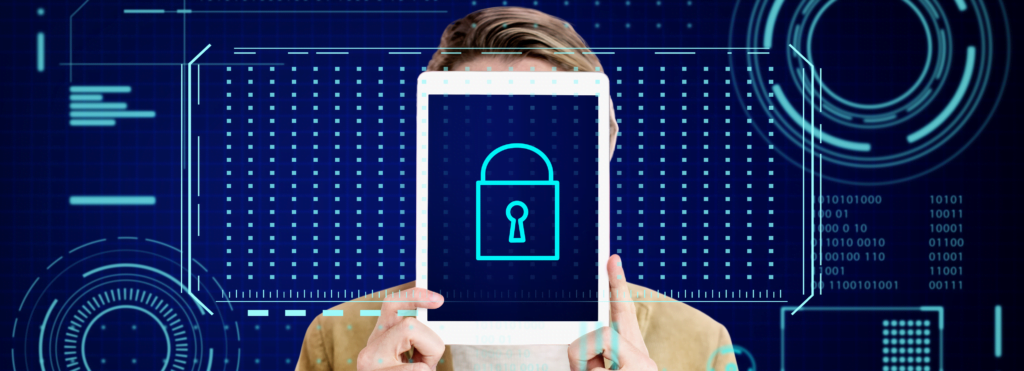Decentralized messaging enables peer-to-peer encrypted communication where no central servers violate user privacy by storing data. Blockchain stores data in blocks over distributed networks as a type of distributed ledger technology. Therefore, most of today’s decentralized messaging solutions leverage blockchain technology.
Open standards provide tools to create interoperable decentralized messaging apps.
Interoperable applications allow us to develop and use different types of applications for communication. An open standard that allows for the development of secure, decentralized, and interoperable applications is Matrix. It’s also suitable for real-time communication, that’s why it can be used for instant messaging. Other use cases include voice-over signalling and internet of things communication.
On Matrix, conversations take place in rooms that can exist on any server. Each user connects to a single server, known as their home server. When a message is sent in a room, it’s synchronized to all of the other servers that participate in that particular room. Users can sign up for Matrix over Element – a chat app also provided by Matrix.
The decentralized messaging standard also allows self-hosting via special home server implementation.
NFT domains play a key role in decentralized digital identities, including decentralized instant messaging and emails.
Take, for example, Ethereum Name Service (ENS), which is also an open standard and a public good managed by a nonprofit organization. ENS is an NFT domain that maps wallet addresses with human-readable names. Owners of ENS domain names can also use them as usernames. ENS provides a complete decentralized infrastructure. Other dApps can integrate with it to develop various decentralized messaging apps.

For example, dm3 is an open-source protocol that leverages ENS domains to enable encrypted messages between different ENS domain name owners. dm3 publishes text records on ENS, providing public encryption and signing keys via global consensus on the Ethereum blockchain.
When a user, say, for example, jane.eth, types a message to john.eth in the dm3 app and submits it, the message content is signed by Jane’s private signing key and encrypted by the recipient’s – in this case, John’s – encryption key. All these are possible thanks to the blockchain foundation provided by the Ethereum Name Service. As ENS is non-custodial, so are the services provided by dm3.
Users can choose the location where the messages are stored. They are free to pick a third-party service or self-host, for example, via IPFS storage or a personal cloud. It’s possible to integrate dm3 as a widget in other decentralized applications. There’s also a separate dm3 chat application that users can join voluntarily.

End-to-end encrypted emails and other services are also possible
Companies extend similar approaches that ensure encrypted messages to other forms of digital communication. Skiff is, for instance, both an email service and also a decentralized, private team collaboration tool.
Products offered by Skiff use end-to-end encryption (E2EE), a security standard that completely protects shared information between two users both during transit and also resting on the server. If, for example, someone tries to change the content of a message during transfer, tampering will be evident because the recipient won’t be able to modify it afterwards. This is an essential precaution against fraudulent activities.
Apart from the email service, Skiff offers encrypted notes, tables, file sharing, scheduling, and event planning. For instance, Pages allow users to write documents, pages, and wikis securely and privately. Moreover, team members write and edit the same document while preserving privacy.
Another decentralized app that offers a suite of encrypted services is Dust. Its product range includes an encrypted messenger, private web search, and a watchdog to know if your data has been compromised in the past or new breaches.
Author

Nagi An is a content writer who is passionate about NFTs, web3, DAOs, and DeFi. She's covers a variety of topics about NFT fundamentals.




